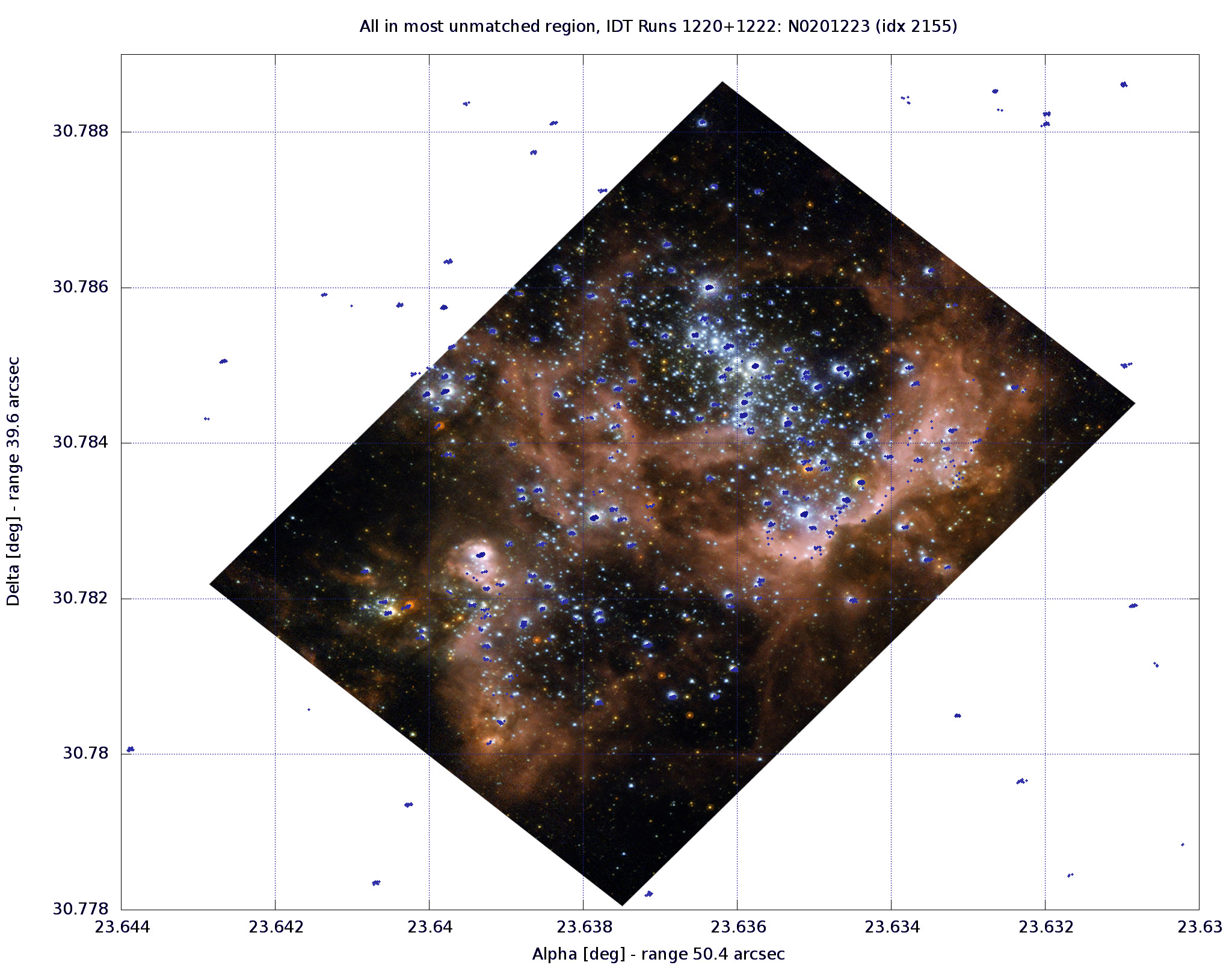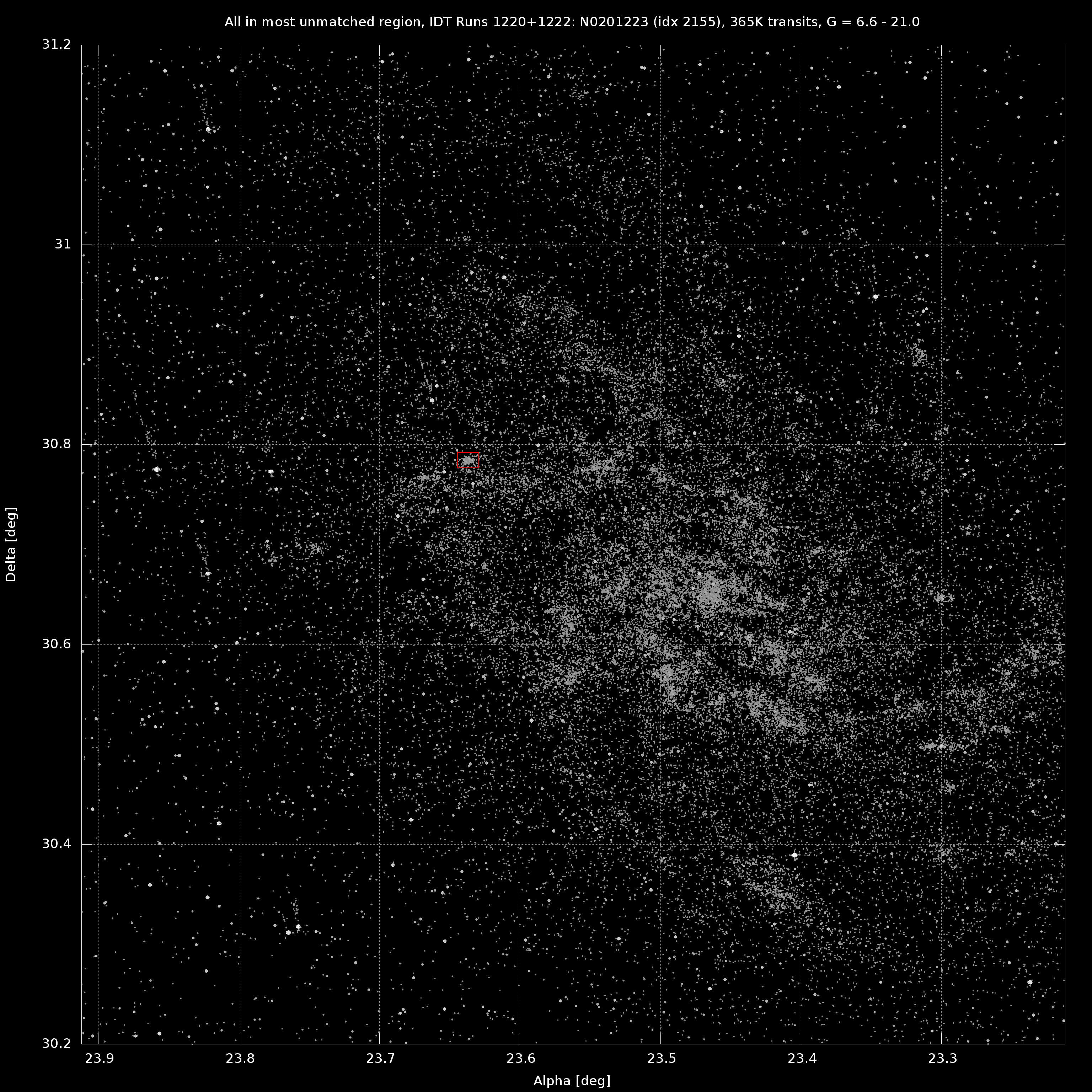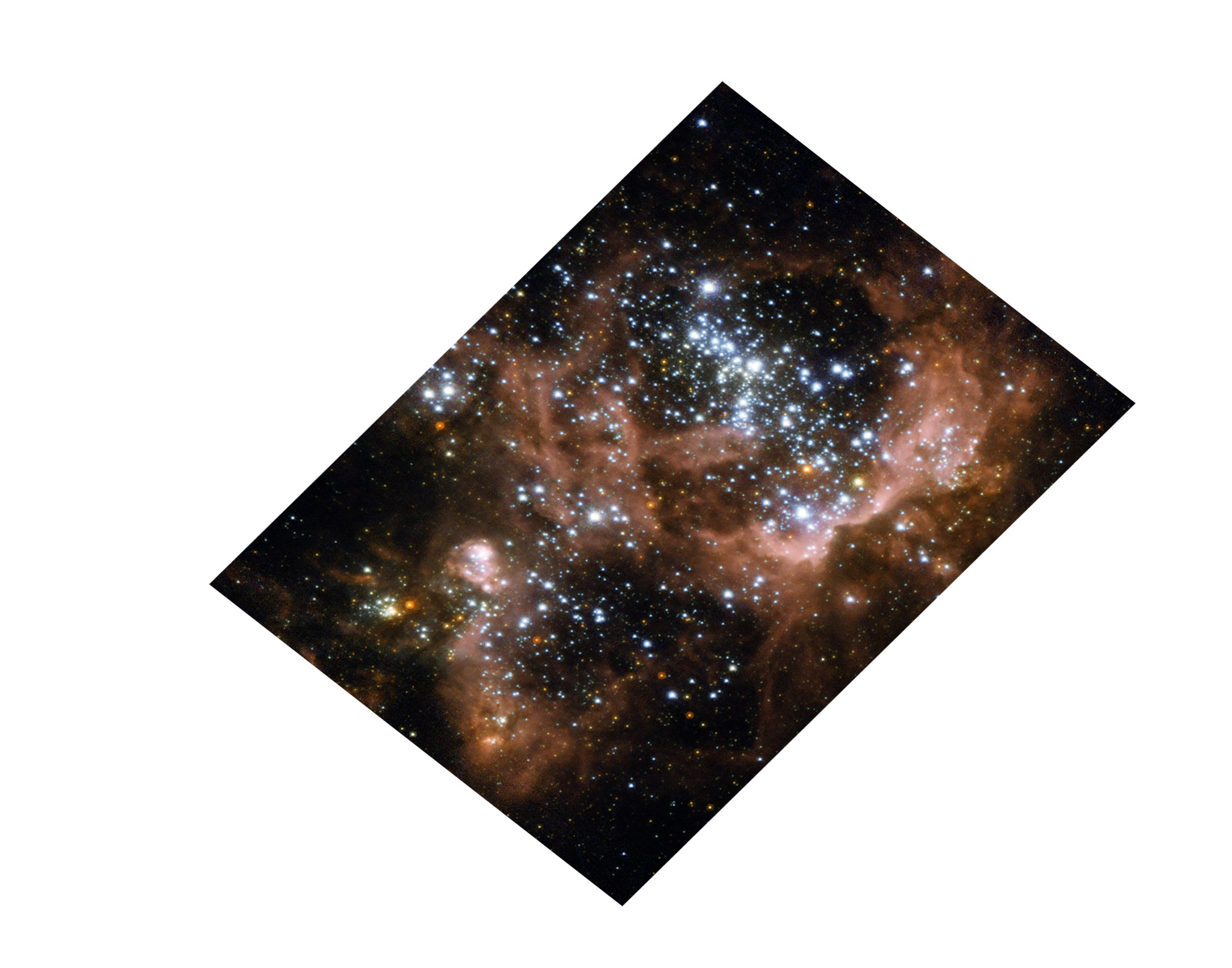IoW_20170420 - Gaia
Image of the Week |
Extra-galactic Observations with GAIA |
 |
|
Figure 1: Combination of Gaia observations of NGC 604 with one of the sharpest images available from the Hubble Space Telescope (Image credit: ESA/Gaia/DPAC/IEEC-UB) |
|
Today, since the start of the routine scientific operations phase on 25 July 2014, Gaia has been scanning the sky for exactly 1000 days. More than 35 TB of scientific data were gathered until now, close to 70 billion object transits through the focal plane were observed and an impressive 686 billion positional or astrometric measurements, 146 billion brightness or photometric data points, and 13.6 billion spectra were recorded until now. The instruments onboard Gaia are measuring any object seen by its telescopes, as long as the objects appear bright and sharp enough to the autonomous source detection system. This detection system does not (and cannot) distinguish between galactic and extra-galactic stars. Hence, thanks to its excellent angular resolution and sensitivity, Gaia is not only doing the most complete and accurate census of our own Galaxy, but also it is able to observe individual stars in other, nearby galaxies. |
 |
|
Figure 2: M33 Galaxy, also known as the Triangulum Galaxy, as observed by Gaia. (Image credit: ESA/Gaia/DPAC/IEEC-UB) |
|
Figure 2 shows an example of these extra-galactic capabilities of Gaia. In this case it is the M33 Galaxy, some 2.4 million light-years away. It has about 40 billion stars, but Gaia obviously just detects a tiny fraction (about 40 thousand - the brightest ones). Even for bright enough stars, sky regions like this are too dense for the excellent hardware capabilities onboard Gaia. It means that only a fraction of these extra-galactic stars can be detected or measured during a given pass, but the stars will be measured during subsequent passes throughout the mission. This is specifically relevant for stars close to the faint detection limit in crowded regions. Thus, the observed fraction of the stellar population from nearby galaxies will progressively increase, although each of those stars will obviously be measured fewer times than brighter Milky Way stars. The figure was automatically generated by the Initial Data Treatment (IDT) monitoring system, and it focuses on the region labeled as "most unmatched" among the regions processed during a given daily run. That is, many detections in this region do not yet have any nearby entry in the accumulated and consolidated list of observed stars. The reason is the incomplete observation previously mentioned - specifically, the incomplete observations in previous passes. As the mission progresses, the fraction of observed M33 stars will progressively increase. The IDT monitoring system detected this region in two almost consecutive runs (between the 6th and 9th of December 2016), which reassures the capability of Gaia of repeatedly detecting and observing even such distant and faint objects. To illustrate the high resolution of Gaia, a tiny and specific region of this galaxy (highlighted with a red square in Figure 2) was examined. It contains NGC 604, an HII region (an emission nebula) where many stars have just been born - basically a giant stellar nursery. Figure 3 shows the sharpest Hubble image currently available for that area, whereas Figure 4 shows the corresponding synthetic image from Gaia detections. |
 |
|
Figure 3: Sharpest Hubble Space Telescope image currently available for NGC 604 (Image credit: NASA/ESA/Hubble Space Telescope) |
| The Gaia synthetic image of NGC 604 was obtained from data covering 26 consecutive scans in a bit more than three days (four revolutions per day, two telescope scans per revolution). Past observations of that region have not been taken into account in these figures. Here we see about 150 individual stars detected in the NGC 604 region (about 0.55 square arcminutes in the figure), meaning a detected star density of about one million stars per square degree - an extremely high one. The magnitudes range from 16.2 to 20.7 (although most detections are in the 18.8 to 20.4 magnitude range). |
 |
|
Figure 4: Synthetic image of NGC 604 from Gaia detections. Note the very small field of view (just 50 arcseconds wide, or 0.014 degrees). Sky coordinates of objects in this plot are preliminary, determined by the daily IDT system with an accuracy of about 0.2 arcseconds. (Image credit: ESA/Gaia/DPAC/IEEC-UB) |
| In Figure 1, also serving as image of the week, we show a combination of the Hubble image with the Gaia synthetic image, where we can see that indeed many of the stars in that very distant region are detected and measured. More information on NGC 604 can be found from the Hubble Space Telescope website, the Astronomy Picture of the Day website, and from Wikipedia. More on these extra-galactic observations by Gaia can be found here. |
|
Credits: ESA/Gaia/DPAC/IEEC-UB, Jordi Portell, Francesca Figueras, Carme Jordi [Published: 20/04/2017] |
- Removed a total of (10) style text-align:center;
- Removed a total of (7) style text-align:justify;
- Removed a total of (1) border attribute.
- Removed a total of (1) cellpadding attribute.
- Removed a total of (1) cellspacing attribute.
Image of the Week Archive
- Removed a total of (1) border attribute.
- Removed a total of (1) cellpadding attribute.
- Removed a total of (1) cellspacing attribute.








































 Sign in
Sign in
 Science & Technology
Science & Technology